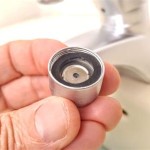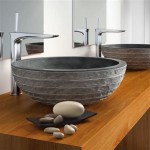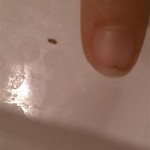How To Safely Clean Bathroom Mold
Mold growth in bathrooms is a common problem, often occurring in damp and humid environments. While it might seem harmless, it is crucial to address mold promptly, as it can pose health risks, particularly for those with allergies or respiratory issues. Cleaning bathroom mold effectively and safely requires a multi-pronged approach, focusing on eliminating the mold, preventing its return, and maintaining a clean and dry bathroom environment.
Understanding the Risks of Mold
Mold is a type of fungus that thrives in warm, moist environments, making bathrooms a prime target. When mold spores are present, they can release allergens and toxins into the air, leading to various health concerns. These can include:
- Allergic reactions: Mold spores can trigger allergic reactions, causing symptoms like sneezing, runny nose, itchy eyes, and skin irritation.
- Respiratory problems: Mold can worsen existing respiratory conditions like asthma and trigger respiratory issues like coughing, wheezing, and difficulty breathing.
- Other health effects: In some cases, prolonged exposure to mold can lead to more severe health problems, including headaches, fatigue, and skin rashes.
The presence of mold also indicates a potential moisture issue in the bathroom, which can lead to other problems, including wood rot and structural damage. Therefore, it is essential to address mold growth promptly and effectively.
Cleaning Bathroom Mold: A Step-by-Step Guide
Cleaning bathroom mold requires careful preparation and the use of appropriate cleaning products. Here’s a step-by-step guide to help you tackle the task safely and effectively:
- Safety First: Before starting, wear protective gear, including gloves, a mask, and eye protection. This will protect you from inhaling mold spores and skin irritation.
- Ventilation: Open windows and doors to ensure good ventilation during the cleaning process. This will help to minimize your exposure to mold spores and prevent the buildup of cleaning solution fumes.
- Identify the Source: Identify the source of the moisture that is fueling the mold growth. This could be a leaky faucet, a clogged drain, inadequate ventilation, or excessive humidity. Addressing the source is essential for preventing future mold growth.
- Cleaning Supplies: Prepare a cleaning solution using a commercial mold cleaner or a mixture of white vinegar and water (1:1 ratio). You can also opt for a bleach solution, but use it cautiously as it can damage some bathroom surfaces.
- Scrubbing: Apply the cleaning solution to the mold-affected areas and scrub with a brush. Use a stiff-bristled brush for tougher areas and a soft brush for delicate surfaces. For hard-to-reach areas, use a toothbrush or a small paintbrush.
- Rinse and Dry: Rinse the cleaned surfaces thoroughly with water. Dry the areas completely using a clean cloth or towel. Leaving any moisture behind will allow mold to grow back quickly.
- Repeat if Necessary: If the mold persists, repeat the cleaning process until it is completely gone. For extensive mold infestation, consider hiring a professional mold remediation specialist.
Remember to dispose of cleaning cloths and materials properly, as they may contain mold spores. Never mix bleach with ammonia, as this can create harmful fumes.
Preventing Future Mold Growth
Cleaning existing mold growth is crucial, but preventing future growth is equally important. Here are some preventative measures to consider:
- Improve Ventilation: Ensure adequate ventilation in your bathroom. Use exhaust fans during and after showering to remove moisture from the air. Consider upgrading to a higher-capacity fan if your current one is inadequate.
- Control Humidity: Use a dehumidifier to reduce humidity levels in your bathroom. This can be particularly helpful in humid climates or during the summer months.
- Fix Leaks Promptly: Address leaky faucets, pipes, and drains promptly to prevent moisture buildup. This will also help to prevent damage to your bathroom fixtures and surrounding infrastructure.
- Regular Cleaning: Regularly clean your bathroom, including wiping down surfaces, cleaning the shower curtain, and mopping the floor. This will prevent mold spores from accumulating and encourage a clean and dry environment.
Regularly inspect your bathroom for signs of mold growth. This may include noticing black or white streaks, a musty odor, or a fuzzy texture on surfaces. If you spot any signs of mold, address them promptly to prevent it from spreading and worsening the problem.

Black Mold In The Shower How To Clean It Kitchen With Matt

Black Mold In The Shower How To Clean It Kitchen With Matt

The Ultimate Guide On How To Clean And Get Rid Of Mold Pro Housekeepers

The Mold And Mildew Remover You Need For Cleaning

8 Easiest Ways To Clean Mold

Kill Bathroom Mould Without Bleach Electrodry Blogs

Bathroom Diy How To Remove Mould

Bathroom Ceiling Mold Removal When To Clean Call Branch Environmental

How To Clean Mold In Shower Grout Tips And Tricks Certified Care

Homemade Mold Prevention Spray Tips To Clean In Shower
Related Posts







